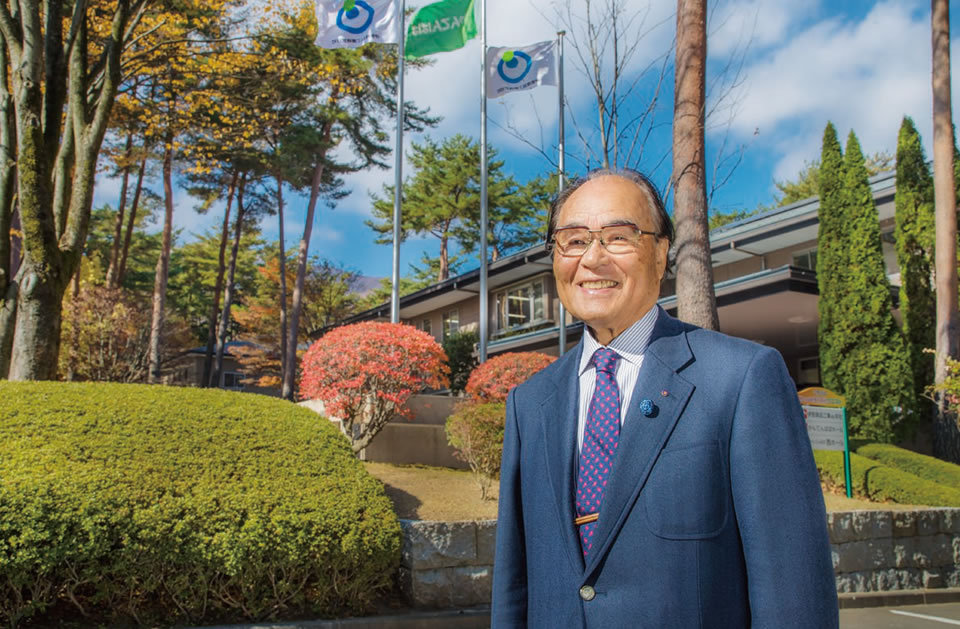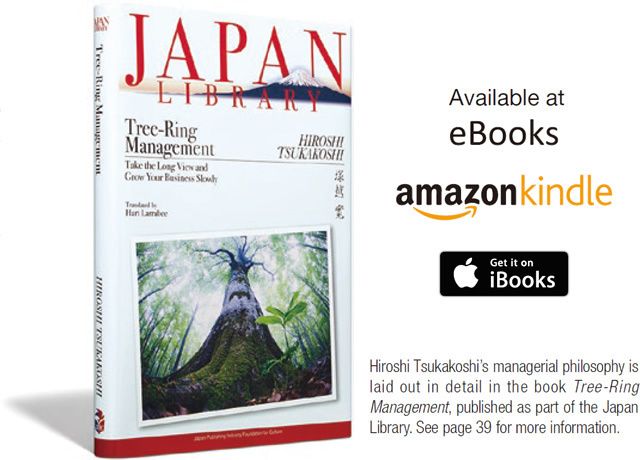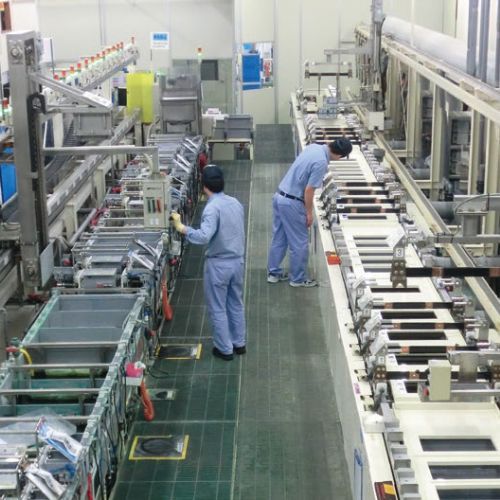Deep in the woodlands of the city of Ina in Nagano Prefecture is a company named Ina Food Industry Co., Ltd. with 531 employees that makes and sells products using the gelling agent agar. Despite its relatively small size compared to food industry powerhouses, the company hosts a never-ending stream of highly prominent visitors, including management teams from Toyota Motor Corporation and other global companies and the Governor of the Bank of Japan. Why does this company enjoy such immense appeal? The reason is the company’s unique managerial philosophy, known as “tree-ring management,” which has enabled the company to grow gradually but steadily over the decades since its founding.
What is agar?
Known in Japan as kanten, agar is frozen, desiccated broth made using agar weed, gracilaria, or other types of gelatinous algae. A food gelling agent, it is widely used in Japan as an ingredient in traditional confectioneries and other products. It has gained prominence recently as a diet food because it is rich in dietary fiber and low in calories. At present it is used not only in food but also in biotechnology and the development of pharmaceuticals.
Ina Food Industry Chairman Hiroshi Tsukakoshi accounted for the company’s success saying, “Why do human activities such as corporate organizations and political parties exist? They exist to bring happiness to people. Corporate profit is not itself the goal; it is a means of making employees happy. A company that sets profit as its goal will obtain that profit at the expense of its employees or suppliers. As the recent profusion of ‘how to’ books at bookstores indicates, the essential philosophy is lacking. It is philosophical matters such as ‘how should things be’ or ‘what is the purpose for doing things’ that are important.”
Agar used to be produced as a side business by farmers during the winter months and was a typical commodity whose production volume fluctuated dramatically with the weather. During the 1973 oil crisis, the market price of agar rose abruptly alongside various other goods and then collapsed, destroying trust across the agar industry as a whole. It was the result of such experiences that Ina Food Industry’s managerial philosophy of “tree-ring management” was born. Tsukakoshi explains, “Heat and cold and wind and snow in the environment affect the width of each tree ring, but trees always grow, adding another ring each and every year without fail. As I see it, this is the natural state of affairs for a company, and the approach the company should take.”
At Ina Food Industry, employees spend time cleaning up the corporate grounds on a voluntary basis before the workday begins. Tsukakoshi asserts that when people are valued, they become filled with a sense of well-being and happiness, making them want to reciprocate.
However, in this era of rapid change and uncertainty, for business executives, wouldn’t the correct approach be to focus on making a profit whenever conditions are favorable? In response, Tsukakoshi cites a teaching of the early-nineteenth-century Japanese thinker Ninomiya Sontoku as a guiding principle for management: “There is a saying: ‘Those who take the long view will prosper. Those who are short-sighted will become poor.’ People who manage companies by riding along on economic ups and downs are not true managers. Achieving good results during an economic upswing is not a reflection of a person’s actual ability. If you manage a company that way, those results will deteriorate the minute the economy sours. True managerial competence is deciding where to utilize the energy that arises from growth when sales are increasing.” Tsukakoshi adds that there needs to be technical strength at the foundation of “tree-ring management,” which is not affected by the ups and downs of the economy. “At Ina Food Industry, 10% of our employees are assigned to research and development. Since we are engaged in a wide variety of research, we are able to commercialize products from that research when the need arises. And, since there is no end to managing a company, there is no need to scramble to achieve results. A company engaged in research and development is able to respond to any changes in society that might arise.”
Under this philosophy Ina Food Industry achieved JPY 19.2 billion (USD 169.9 million) in sales in fiscal 2016. And yet despite its success, the company is not publicly held. Tsukakoshi explains, “The goal of a listed company is to raise its share price by means of net profit and growth potential. When the company grows, the surpluses go to the shareholders. That does not lead to the happiness of the employees and motivation does not improve. At Ina Food Industry, in order to return our profits to the workers, over the past five years we invested JPY 5 billion (USD 44.2 million) in a new plant and have been improving the working environment year in and year out. Personnel expenses are not costs; they are the purpose for managing the company. Besides, the true growth of a company is when its workers are able to feel in a tangible way, ‘I’m happier now than I was before.’”
But surely profit is important in ensuring that a company endures over time? To this question, Tsukakoshi points out, “Of course, I do confirm our performance figures. But recently I have seen too many executives placing far too high a priority on profit, so let me say this: profit is just like human excrement. No one has defecation as his goal in life. But any healthy body naturally produces some excrement every day. Even without trying, out it comes. It is exactly the same with a company making profits.”
Deep in the woodlands of Ina in Nagano Prefecture, there is indeed a small giant growing a bit more year after year after year.


































